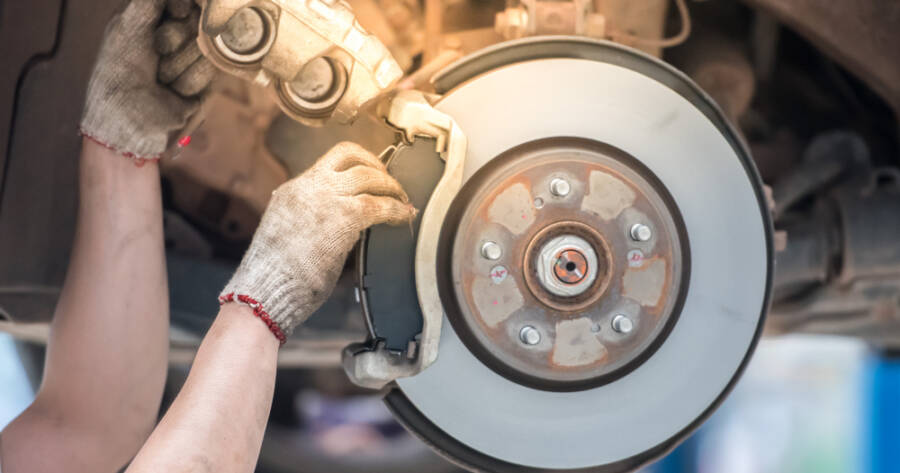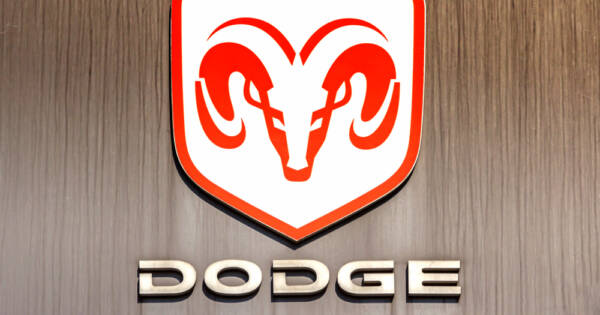If there’s one single thing you absolutely want to be in excellent working condition on your car, it’s the brakes. Your brakes are, obviously, responsible for slowing your car down and stopping it completely. You need to use them for intersections, to navigate traffic, and even just to ease yourself around sharp curves in the road. There are multiple types of braking systems used in modern vehicles, but drivers should take particular interest in understanding disc brakes and how they function.
What Are Disc Brakes?
Disc brakes are located beside the tires of a vehicle. They use a caliper to squeeze pairs of brake pads against a disc (or rotor) to create friction. This friction slows the rotation of the vehicle axle that turns the tires. As a result, a vehicle slows and eventually stops completely.
As you might imagine, the friction from disc brakes causes a lot of heat, which is why disc brakes are vented to allow excess heat to escape. Disc brakes can be found on both the front and rear tires of most modern vehicles.
Who Invested Disc Brakes?
The very first automobile disc brake was used on Lanchester cars manufactured in Birmingham, England in 1902. However, the limited choice of metals at the time meant that disc brakes had to be made of copper, a softer metal that wears out quickly.
As such, disc brakes were dismissed as impractical. Forty years later, during World War II, the Daimler-Company company developed disc brakes for use on their four-wheel drive armored cars. The German army also used disc brakes on some of their tanks during the war.
The Rise of Disc Brakes
After the Second World War, the Chrysler Corporation began experimenting with disc brakes on its more expensive luxury cars such as the Chrysler Crown and the Town and Country Newport – selling disc brakes as a $400 upgrade at the time. The first company to mass produce disc brakes and put them on vehicles as a standard option was Citroën, which placed them on all its family-friendly Citroën DS cars beginning in 1955.
Disc brakes eventually caught on in America in the 1960s, as brands such as Studebaker and Chevrolet began to mass produce them. Soon, every major automaker was using some form of disc brake technology on their vehicles.
How Do Disc Brakes Work?
In many ways, disc brakes are like the brakes found on bicycles. The same braking principle applies between disc brakes on cars and hand brakes found on bicycles. Bike brakes also have a caliper that squeezes brake pads against the wheel. The difference is that disc brakes squeeze a rotor rather than the wheel itself, and the force applied is transmitted hydraulically instead of through a cable as on a bicycle.
Both disc brakes and bicycle brakes use friction between pads and a disc to slow a moving vehicle. Vented disc brakes have a set of vanes on either side of the disc that pump air through the disc to cool them.
What About Drum Brakes?
Vehicles that don’t operate with disc brakes typically use drum brakes instead. Drum brakes consist of a brake drum attached to the inside of the wheel. When the brake pedal is engaged, hydraulics press two brake shoes against the brake drum. This creates the friction needed to slow and stop a vehicle.
Drum brakes used to be the main type of braking system in vehicles worldwide but have been largely replaced by more reliable disc brakes. Today, drum brakes are used most often on heavy duty trucks. Almost all vehicles manufactured these days now use disc brakes.
Maintenance of Disc Brakes
As initially mentioned, the braking system on your vehicle is one of the most important. Making sure you have reliable and responsive brakes is one of the best ways to keep yourself safe while driving. The good news is that maintaining disc brakes is relatively easy and inexpensive — at least compared to some other major vehicle repairs.
Your disc brakes can be accessed simply by removing your tires. Depending on what style of wheels your car has, you might even be able to visually inspect your disc brakes simply by looking at them. Experts recommend you check your brake pads roughly every 12,000 miles and replace the brake fluid every 25,000 miles. Here are some key things to watch out for — and how to address those situations.
Check Pads and Rotors
Disc brakes work when the brake pads are pressed against the rotors. They generate plenty of friction and heat. As such, these two parts of your braking system are more prone to wearing down than anything else. There are a few telltale signs that something is wrong with your pads or rotors. For example, if you need to press your brake pedal down farther to achieve the same stopping ability, if you hear a metal-on-metal screeching sound when you brake, or if you smell a burning odor.
Checking your pads and rotors frequently is a smart move. It’s much cheaper (and easier) to replace the pads when they are 80% worn than it is to replace entire rotors or calipers because the brake pad was eroded away months earlier.
Check Brake Fluid
Disc brakes work via a hydraulic system. When your foot presses the brake pedal, it pushes brake fluid down a line and compresses the calipers. The calipers, in turn, force the pads and rotors together and slowing your vehicle. The fluid in that line (and the line itself) is just as important as anything else.
Unfortunately, brake fluid can attract moisture. That moisture can cause corrosion, eating away at the metal parts of your braking system. Even the brake line itself can become damaged. If you end up losing brake fluid from your system, braking could become much harder (or even impossible). Make sure you change your brake fluid every 25,000 miles, but also check it periodically. If it looks cloudy or milky, that’s a sign there’s too much moisture inside.
Replace or Upgrade Parts
You can buy a variety of brake parts from almost any reputable auto parts store. Whether you want better performance or just more durable parts, there are a number of upgrades you can make to your disc brakes.
The most common replacement parts are slotted disc brakes (which allow for heat to escape quicker) or using ceramic brake pads (which are quieter). If your rotors start to get worn with gouges, you can replace them entirely. However, it’s sometimes cheaper to have an auto shop re-machine them with a lathe, smoothing out the braking surface again. This makes the rotors marginally thinner, though, which isn’t ideal. You shouldn’t machine your rotors very often — ideally, you’d never do it.
Pros of Disc Brakes
There’s a reason that disc brakes are so common. They provide a safe stopping system without being overly complex or expensive. Here are some of the main advantages of disc brakes.
- Fairly accessible, meaning you can swap your own replacement parts with relative ease.
- Parts are not expensive, at least compared to major engine components.
- Disc brake maintenance can be done fairly quickly — often in just a few hours.
Cons of Disc Brakes
Although disc brakes are easily the stopping system of choice for almost every daily driver vehicle you’d consider buying, they aren’t perfect. Here are a couple of their largest downfalls.
- They are prone to excessive wear and tear, especially if you consistently brake hard and late.
- If the brake pads wear out, the calipers and rotors will start to grind each other down. This is a more expensive fix.
- Disc brakes don’t work quite as well in wet, snowy, or slippery weather. If the pads and rotors are wet, the extra lubrication reduced the friction used to slow down.
The cons of disc brakes aren’t really that worrying, though. The pros still massively outweigh them. Plus you don’t have much of a choice, unless you’re a serious gearhead with the know-how to drastically modify your vehicle (and keep it street legal).
The Bottom Line
Your brakes are a key safety component of your car. You should always take the time to ensure your brakes are in good condition and working properly. Disc brakes are a simple yet efficient system, which is why they are used by almost every major auto manufacturer.
With a little bit of education (YouTube is great for this, by the way) and the right tools, you can easily learn how to maintain your own disc brakes. It will easily save you thousands of dollars over your driving lifetime.




